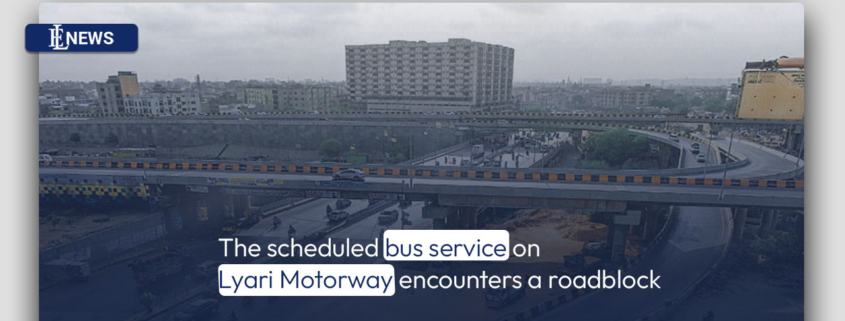The scheduled bus service on Lyari Motorway encounters a roadblock
The federal government and traffic authorities argued that the 16.5-kilometer-long infrastructure “isn’t meant” for public transport operations, and that any such initiative would increase risks for vehicles using the motorway and negatively impact the facility.
Read more with EL news: RDA to regulate private housing societies in the district of Rawalpindi
In an unexpected move, the Sindh transport department last week proclaimed the launch of its Peoples Bus Service on the Lyari Motorway to alleviate commuters’ travel difficulties, just days after the feasibility of such an initiative was thoroughly debated.
The announcement by the Sindh government raised serious doubts about the project’s ability to meet the requirements of the hundreds of thousands of people who travel daily between the eastern and southern districts.
In numerous meetings conducted prior to the announcement of the project by the Sindh government, the federal authorities informed the provincial government that the initiative was not viable for a variety of reasons.
An official of the federal government department that governs, regulates, and manages the Lyari Motorway — the National Highway Authority (NHA) — acknowledged the provincial government’s good intentions and stated, “This announcement is absolutely based on public service.”
“We have no reason to doubt the intentions of the Sindh administration, but Lyari Motorway is a two-lane motorway designed for nonstop, fast-moving vehicular traffic. It must be understood that it is not intended for public conveyance.”
Then, he mentioned the dangers associated with the operation of the public transportation service, which could cause significant problems for the expressway’s overall purpose and diminish its utility.
“The average daily traffic count on Lyari Motorway ranges from 40,000 to 50,000 vehicles, of which 80 percent are cars and the remainder are other LTVs,” stated the official.
“There is neither a road shoulder nor a service area such as a petrol station or any other facility on the north or south sides of the motorway that could be used to position a disabled vehicle. The Lyari Motorway has approximately 27 curves and only 15 stretches of one to two kilometres that are straight, making it particularly hazardous for public transport vehicles.
With more than 20 ramps and 12 spans on the motorway, the north side of the road is constructed ‘exclusively with pillars’ at certain locations, making it insecure for vehicles carrying dozens of passengers, he added.
“Twelve roads cross beneath the motorway from both the north and south, and it could be extremely dangerous if a PSV collapses, falls over another vehicle or collides with another vehicle,” he added.
While concurring with the federal institution’s concerns, a traffic official cited certain ‘facts’ that make the Lyari Motorway ‘usable’ for certain vehicles with specific speed and weight.
“There are no hard shoulders on ramps or bridges,” he continued.
“In the event of a bus failure, the vehicle will remain on the roadway, obstructing the flow of traffic and posing an extreme hazard to other vehicles using the motorway. The entire length of the motorway is surrounded by densely populated areas on both sides. In the event of an accident or other incident, it is possible for a bus to descend onto residential areas. Similarly, in the event of an emergency, rescue or recovery of such a bus will be extremely challenging due to the limited access at interchanges.”
He mentioned the technical fact that the Lyari Motorway was constructed so that traffic could not turn from the north side to the south side, with the exception of the exits and interchanges.
“When operating a public transport service on any route, there is a possibility that illegal or unauthorised bus stops will develop. They cannot be excluded when such operations are initiated. There are no bus stations on the motorway, so passengers must board and disembark on the roadway, which is not only hazardous for their own safety but also for the safety of other motorists.



